New Paper: IFU survey data and the BH mass dependence of long-term AGN variability
This paper lead by CARS PI Bernd Husemann from the Max Planck Institute for Astronomy in Heidelberg presents the optical IFU data including processing and analysis as the core data for CARS. The paper describes the sample in details and reports some basic host galaxy parameters including morphological information. A key scientific analysis in this paper is the mapping of the excitation conditions of the ionized gas and the size of the AGN-ionized region, which is often referred to as the extended narrow-line region (ENLR). Quite unexpected, we observed that the maximum size of the ENLR correlates most strongly with the central BH mass. Assuming that the maximum ENLR is a time-scale indicator for a single optically-bright BH accretion episode, we infer a tight relation between the AGN episode and the BH mass. Adopting a simple "light-bulb" model for the light intensity during the episode and random sampling of the age of each AGN, we were able to infer the underlying relation using a Bayesian approach. This relation nicely agrees with similar estimates of the AGN episode timescale for more massive BH at high redshift using the proximity zone technique.
Maximum ENLR size against BH mass. The light travel time implied by the ENLR size (red line) can be converted into an AGN episode lifetime (blue line) using "light bulb" light curve and a random sampling assumption during the lifetime with a Bayesian approach. This AGN lifetime relation agrees with the inferred lifetime of higher mass BH at z~3 from the HeII proximity zones using the same methodology.
